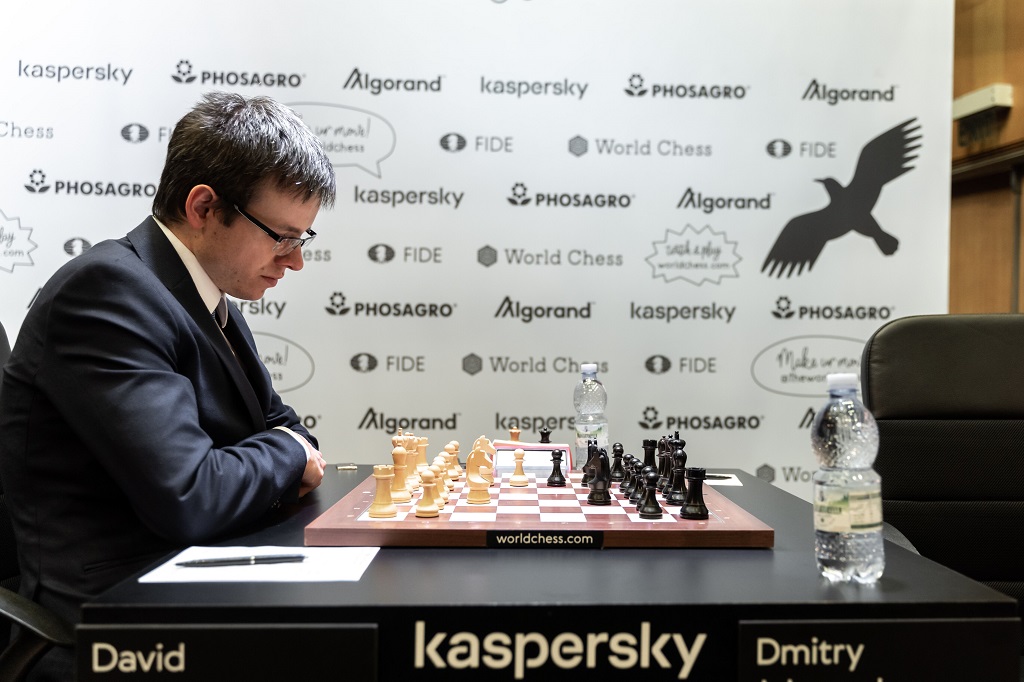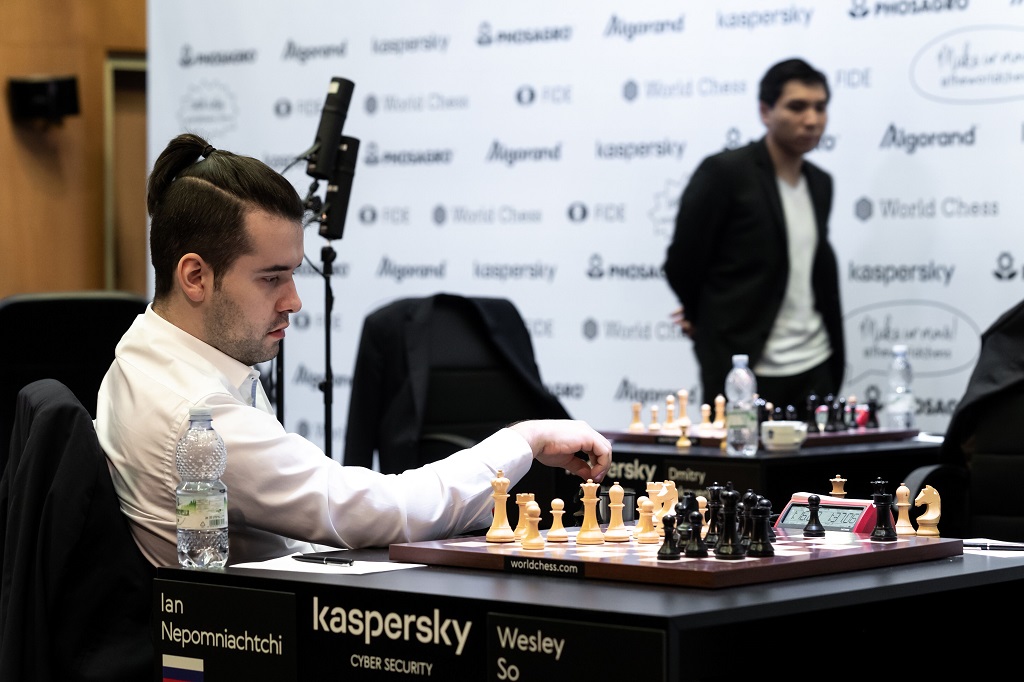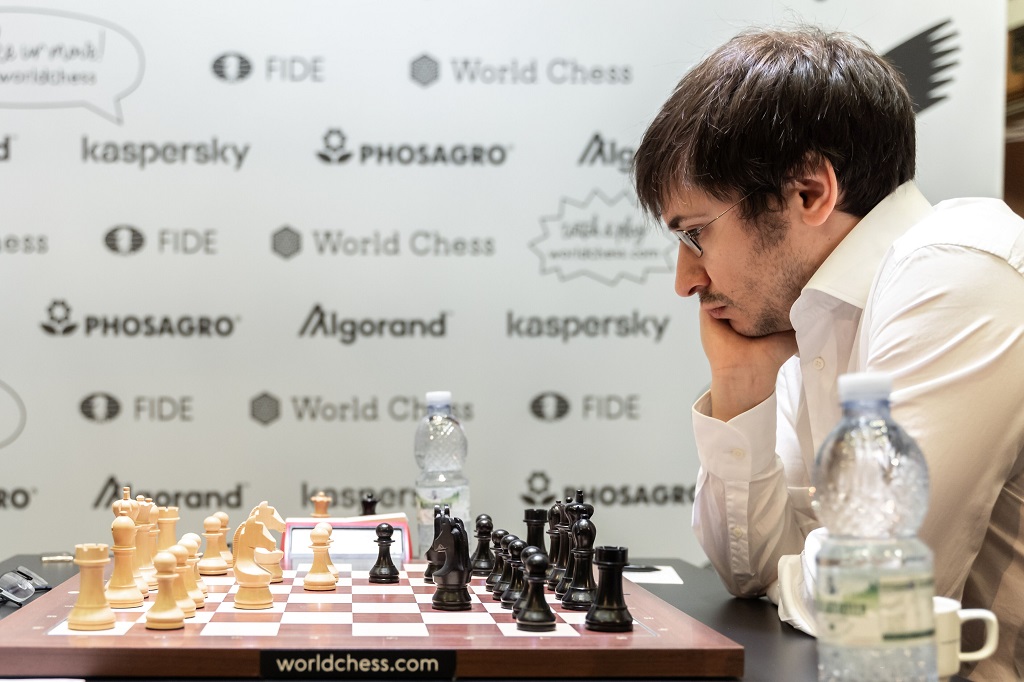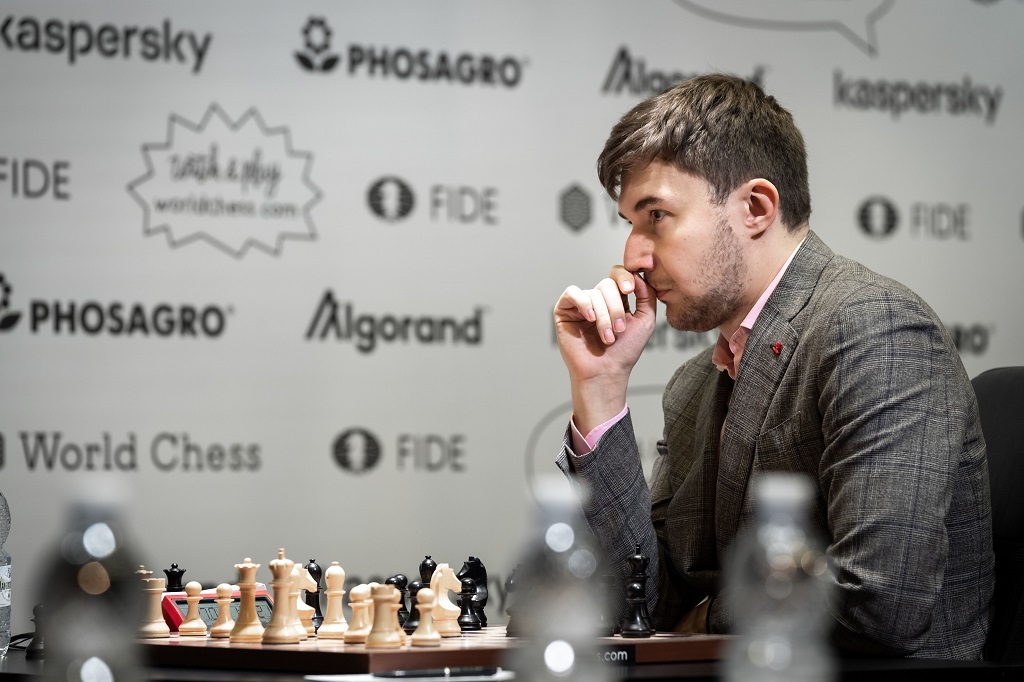


 The fourth leg of the FIDE Grand Prix is being played in Jerusalem, Israel. The 16-player knockout has a €130,000 prize fund, with the series as a whole having an additional prize fund of €280,000 plus two qualifying spots for the 2020 Candidates Tournament. The tournament takes place in the Notre Dame of Jerusalem Centre from December 11th to 23rd.
The fourth leg of the FIDE Grand Prix is being played in Jerusalem, Israel. The 16-player knockout has a €130,000 prize fund, with the series as a whole having an additional prize fund of €280,000 plus two qualifying spots for the 2020 Candidates Tournament. The tournament takes place in the Notre Dame of Jerusalem Centre from December 11th to 23rd.
After day one of the quarter-finals finished with disappointingly short draws on all boards, FIDE Press Officer Anastasiya Karlovich made a point of asking the players about the controversial decision to choose pragmatism over combativeness. Wesley So responded impassively, pointing out that "one of us has to win" in the end. This is simply a logical consequence of using the knock-out format in events with so much at stake. Or, as Maxime Vachier-Lagrave put it:
I understand the frustration from the point of view of the spectators, but for me it's about something else, it's about qualifying for the Candidates, so for this one I cannot be entertaining, at least not if it diminishes my chances.
The Frenchman played with Black in the rematch against Dmitry Andreikin, and the players explored a line that was made famous in a game from the 90s, when Joel Lautier drew Garry Kasparov in Tilburg. This prompted 'MVL' to comment that this is now a sort of France v Russia battleground. Andreikin deviated from the famed game on move 20:
Lautier had played 20.♖c7 here, and a draw was agreed. Andreikin opted for 20.♔f1, but after 20...♜b8 21.♗c3 the queenside pawns were exchanged and the point was split soon after.

The game attracted David Navara's attention | Photo: Niki Riga
This line with 12.♘xa2 is all about the 16...♛c8 move, so if Black knows ...♛c8 he's probably equalizing...and the game is not gonna be eventful, so I don't think the chess fans missed something.
So commented in turn:
Now we move on to the tiebreaks, where Ian is always very fast.

Wesley So and Ian Nepomniachtchi | Photo: Niki Riga
The one decisive game of the day saw David Navara get the upper hand out of the opening, when Dmitry Jakovenko played a bit too passively, especially with 17...♚h8. Navara moved his strong centre forward and eventually created a dangerous passer on the d-file:
The Russian grandmaster tried to destabilize White's pawn structure with 24...g5, but Navara had everything in place to plough ahead with 25.d6. The game continued 25...exd6 26.exd6 ♜d7 27.♗xc5, and with the bishop protecting the strong pawn Jakovenko was left with an almost hopeless defensive task.
The pawn promoted to a queen on move 35, and resignation came two moves later. Navara will play either Wei Yi or Sergey Karjakin in the semis.

Dmitry Jakovenko had knocked out Shakhriyar Mamedyarov in round one | Photo: Niki Riga
While the focus of the race for the spot in the Candidates has been put mostly on Vachier-Lagrave and Nepomniachtchi, there is another player in the field who might end up joining one of them next May in Ekaterinburg.
It is impossible for Sergey Karjakin to finish in the top two of the GP overall standings, but he still has an outside chance of getting third place. Since the Russian Chess Federation announced that they will nominate a player from their country as a wildcard and that they will decide who to nominate after pitting the eligible players against each other, Karjakin might end up playing Kirill Alekseenko — who got third place in the Grand Swiss — for the wildcard spot. To do so, he would need to finish first in Jerusalem and wait for So to eliminate Nepomniachtchi on Monday.
In game two of the quarter-finals, Karjakin faced an inspired Wei Yi:
There followed 22.♖xc5 bxc5 23.♖b1 ♝g7 24.♖xb7 h5 25.♖xf7 hxg4, and White was left with two pawns for the exchange. Wei Yi tried to make something of his initiative, but Karjakin defended accurately until reaching the draw on move 40.

Sergey Karjakin | Photo: Niki Riga
Official broadcast with GM Evgeny Miroshnichenko via worldchess.com
Previous reports: